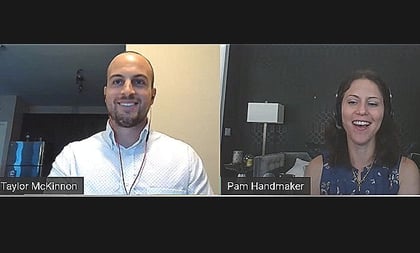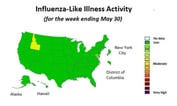Insurance product designers who want to help fight COVID-19 should consider what they can do quickly, and what they can do with a product that might take more time to develop.
Taylor McKinnon and Pamela Handmaker talked about their insurance product design ideas Monday, at a session at a Society of Actuaries (SOA) health insurance conference that was held online, due to COVID-19.
McKinnon is a compliance consultant at Milliman.
Handmaker is senior director of product and innovation at Trustmark Benefits.
For a health insurer eager to do something now, “one of the options is just developing a new product,” McKinnon said. “But developing a new product takes time. Is that a quick enough approach?”
In many cases, McKinnon said, there’s a simpler, faster way: Showing consumers and employers that there’s an existing product that can already meet their pandemic-related insurance needs.
Supplemental Health Benefits
Designers of the kinds of major medical insurance policies that many people get at work, or through the Affordable Care Act public exchange system, must follow strict ACA benefits rules.
Designers of other types of health insurance products – such as disability insurance, dental insurance, critical illness insurance and hospital indemnity insurance – fall outside the scope of the ACA rules. Designers of non-ACA health insurance products must comply with state insurance regulators’ rules, but, in states with flexible rules for “excepted benefits” products, they may be able to come up with a much wider range of products.
(Related: Democrats’ Strategy for Senate Wins Diverges in Western Desert)
In Texas, for example, a startup, Clara Insurance, is working with an arm of Reinsurance Group of America Inc. to offer a group “critical illness insurance policy” with benefits that can be triggered by urgent care visits for more than 10,000 different conditions.
How to Invent an Insurance Product
McKinnon suggested that, for health insurance product designers who want to address a crisis like the COVID-19 pandemic, one strategy might be to start by positioning an existing product as a solution now, introduce a basic new product a year or two later, and then work on improving the new product.
For the entirely new product, the company should try to design a product that could be useful to people dealing with conditions other than COVID-19, in case the COVID-19 outbreak fades away, McKinnon said.
Here are five other recommendations McKinnon and Handmaker had for supplemental health product designers.









 June 09, 2020 at 01:03 AM
June 09, 2020 at 01:03 AM











